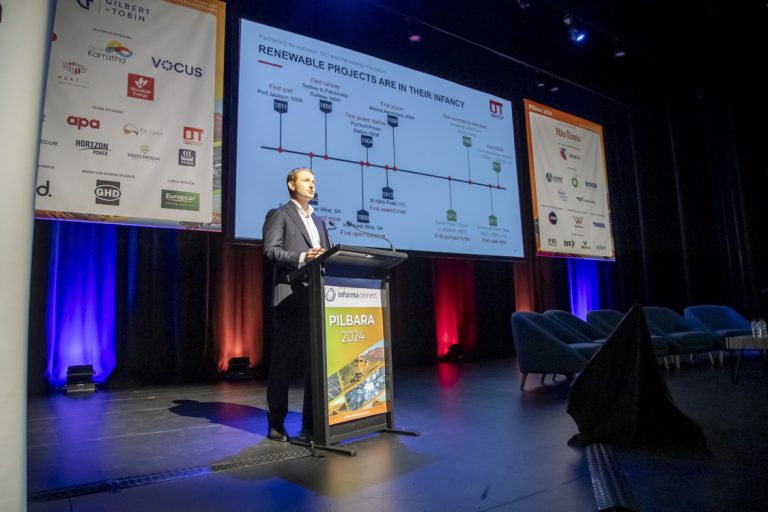Unlocking latent value in energy projects

In today’s rapidly evolving energy sector, identifying and harnessing latent value within renewable projects is crucial for maximising their potential. This can be difficult without the wealth of experience more traditional sectors benefit from and it’s helpful to look at the history of large-scale infrastructure projects in Australia to understand how this capability has developed over time.
It's still early days for renewable projects
Compared to other sectors, utility-scale renewable projects in Australia are relatively new. The extensive knowledge and proficiency accumulated over the last 100-200 years to optimise infrastructure development in maritime, rail and roads doesn’t exist in the renewables space. With the rapid pace of change, this gap has the potential to significantly impact the total value output of renewable projects. In this instance, it’s important to note, that value refers to evaluating the optimal total output against a project’s weighted criteria (including safety, social impact and financial outcomes).
To illustrate, consider the first railway project between Sydney and Parramatta in 1850. It was a rigid fixed-price, lump-sum contract due to be finished in 1853 but ran two years late and significantly over budget due to difficult terrain, technical challenges and workforce issues. Over time, more collaborative contracting strategies were adopted in the railway sector, enabling experts to be engaged earlier to identify potential risks, improve project outcomes and ultimately realise greater value.
The renewable project timeline
Examining a typical renewable energy project timeline reveals that EPC (Engineering, Procurement, and Construction) contractors are usually engaged late in the development phase - just before construction. By this point, critical activities have concluded, including site investigations, environmental and connection approvals, energy production studies, equipment selection and substantial design progression. This late engagement limits the ability to innovate to those areas which do not require costly re-work and results in projects carrying substantial latent value. Hidden value that is likely to remain undiscovered in the project and for its stakeholders.

Whole of Life (WOL) Value
Multi parameter optimisation (MPO) is the process of simultaneously optimising several variables or parameters to achieve the best overall outcome – balancing factors such as cost, efficiency, environmental impact, reliability and performance.
Whole-of-life is an MPO that holds significant latent value, especially in energy and renewable projects. Early collaboration with the right expertise can uncover and unlock this value, particularly in areas like:
- Optimising generation assets locations: Providing timely capital cost inputs into generation yield models ensures each asset’s location considers both capital and lifecycle costs, optimising each asset (e.g., wind turbine location) to deliver the highest Net Present Value (NPV).
- Access and permanent road alignments: Avoiding costly rock outcrops, excessive cut/fill, and reducing environmental impacts supports early project activities and ensures safe paths for equipment and future maintenance.
- Design innovations: Timely consideration of new or alternative opportunities can be integrated into the project’s solution.
- Refining substation and cable network design: Enhancing operational performance, assisting in connection approvals, and informing discussions with network service providers.
- ‘Balance, Cut, and Fill’: Minimising import/export requirements, reducing environmental impact, and improving road maintenance programmes for the asset’s life.

Improving project certainty through efficiency
Focusing on targeted and controlled cost management is critical, especially during the feasibility stage. Key areas for this focus include:
- Geotechnical and topographical surveys: Ensuring adequate detail is captured to avoid time-consuming and costly rework.
- EPC/OEM/O&M programme alignment: Optimising the sequence of equipment delivery with the balance of plant progress and early handover.
- Supply chain engagement: Assessing local capabilities, identifying long-lead items, and developing pre-fabrication strategies.
- Constructability and approvals input: Collaborating with indigenous custodians and considering cultural and environmental requirements.
- Grid connection input: Better informing generator performance standards and coordinating third-party works.
- Contracting strategies and risk allocation: Ensuring risks are understood and allocated to the parties best placed to manage them.

Engaging EPC Contractors Early
Unlocking latent value requires timely input from the right expertise, and early engagement of EPC contractors is key. A common misconception is that early engagement reduces financial outcomes due to decreased competition. However, the Early Contractor Involvement (ECI) model provides a structured procurement methodology designed to maintain competitive tension and drive favourable outcomes.
The ECI Model
The ECI model achieves value realisation by:
- Engaging EPC contractors early: Contractors, through a competitive tender, provide a committed ECI fee and a non-binding price for the EPC works.
- Agreeing on a not-to-exceed/target price: The client benefits from the market’s response and appoints the successful EPC contractor for the ECI phase.
- Collaborative work during ECI phase: The EPC works with the client and project team on a full-open-book basis to unlock and realise latent value. Deliverables include design engineering, site investigations, stakeholder and approval conditions resolution.
- Binding price provision: Before the ECI phase ends, the EPC provides a binding price less than the NTE, meeting the target cost for construction commencement.
- Maintaining competitive tension: Competitive tension remains during the ECI phase, with NTE/Target price hurdles motivating behaviours. If targets aren’t met, the client retains all IP and deliverables, allowing for re-engaging the contractor market for competitive tenders for EPC works.

Conclusion
Renewable projects are in their infancy, and to deliver them effectively like we do their 200-year-old counterparts in other sectors, we need to facilitate a considered and collaborative environment. This approach will help realise the full value of these projects and successfully transition our energy reliance to more sustainable sources.

